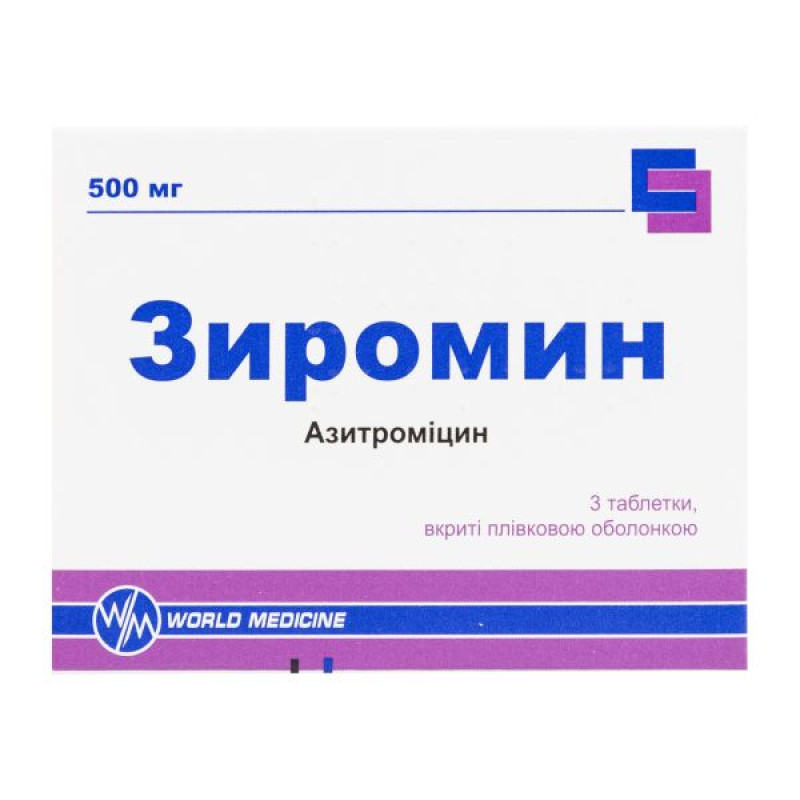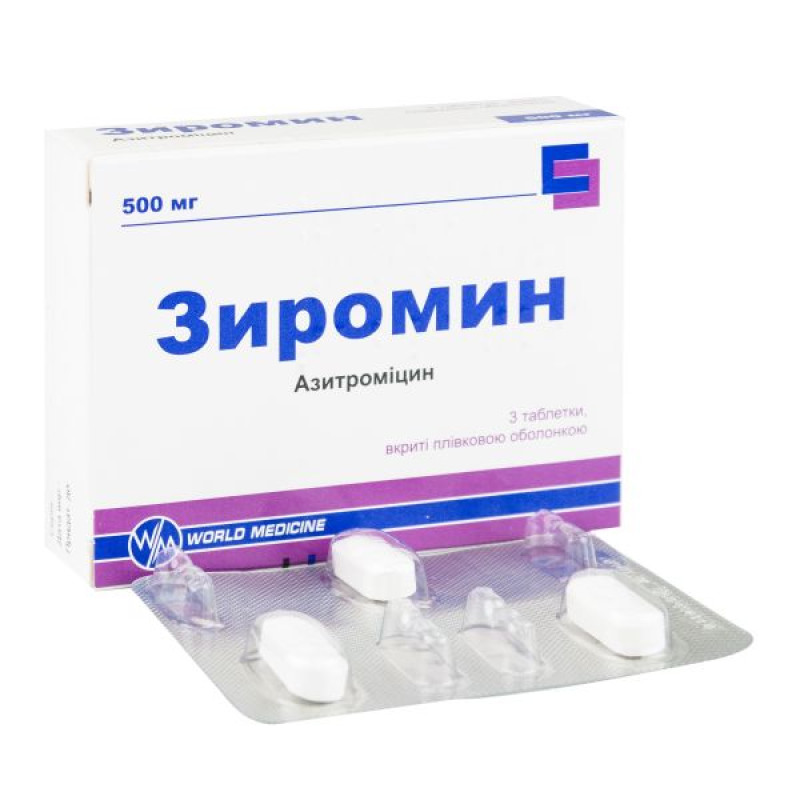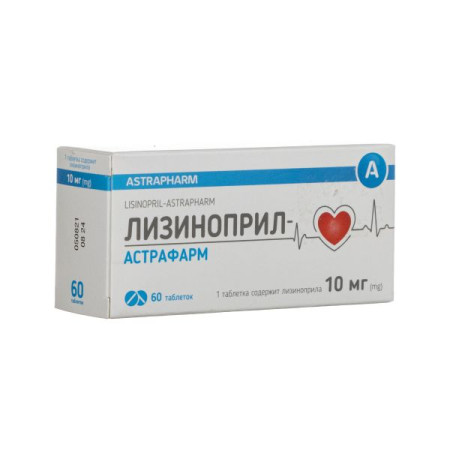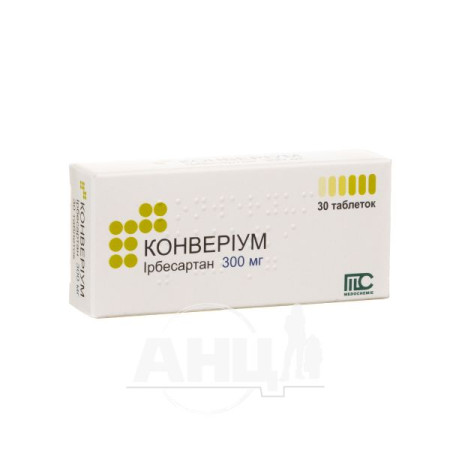Zyromin film-coated tablets 500 mg blister No. 3
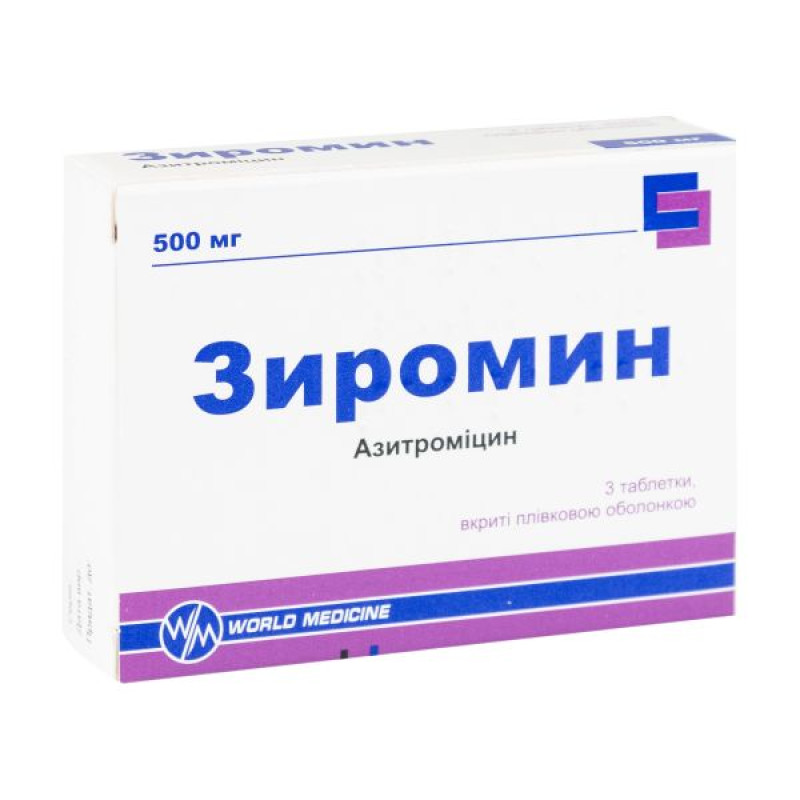
Instructions Zyromin film-coated tablets 500 mg blister No. 3
Composition
active ingredient: azithromycin;
1 tablet contains azithromycin (as azithromycin dihydrate) 500 mg;
excipients: anhydrous lactose, pregelatinized starch, low-substituted hydroxypropylcellulose, calcium hydrogen phosphate, sodium lauryl sulfate, croscarmellose sodium, colloidal anhydrous silicon dioxide, magnesium stearate;
shell composition: "Opadry" white (Y-1-7000): hypromellose, titanium dioxide (E 171), polyethylene glycol.
Dosage form
Film-coated tablets.
Main physicochemical properties: oblong, white tablets, film-coated, with a breakline on one side.
Pharmacotherapeutic group
Antibacterials for systemic use. Macrolides, lincosamides and streptogramins. Azithromycin. ATC code J01F A10.
Pharmacological properties
Pharmacodynamics.
The drug is a macrolide antibiotic belonging to the azalide group. The molecule is formed by the introduction of a nitrogen atom into the lactone ring of erythromycin A. The mechanism of action of azithromycin is to inhibit bacterial protein synthesis by binding to the 50S subunit of ribosomes and inhibiting peptide translocation.
Spectrum of antimicrobial activity of azithromycin
| Typically sensitive species |
Aerobic Gram-positive bacteria: Staphylococcus aureus (methicillin-sensitive) Streptococcus pneumoniae (penicillin-susceptible) Streptococcus pyogenes (group A) |
Aerobic Gram-negative bacteria: Haemophilus influenzae Haemophilus parainfluenzae Legionella pneumophila Moraxella catarrhalis Neisseria gonorrhoeae Pasteurella multocida |
Anaerobic bacteria: Clostridium perfringens Fusobacterium spp. Prevotella spp. Porphyromonas spp. |
Other microorganisms: Chlamydia trachomatis |
| Species that may acquire resistance |
Aerobic Gram-positive bacteria: Streptococcus pneumonia (with intermediate sensitivity to penicillin and penicillin-resistant) |
| Resistant organisms |
Aerobic Gram-positive bacteria: Enterococcus faecalis Staphylococci MRSA, MRSE1 |
| Anaerobic bacteria |
| Bacteroides fragilis group |
1Methicillin-resistant Staphylococcus aureus has a very high prevalence of acquired resistance to macrolides and is listed here because of its rare susceptibility to azithromycin.
Pharmacokinetics.
Absorption
Bioavailability after oral administration is approximately 37%. Maximum plasma concentration (Cmax) is reached 2-3 hours after taking azithromycin.
Distribution
Binding to plasma proteins varies depending on plasma concentrations and ranges from 12% at 0.5 μg/ml to 52% at 0.05 μg/ml in plasma. When administered orally, azithromycin is distributed throughout the body. Pharmacokinetic studies have shown that the concentration of azithromycin in tissues is significantly higher (50 times) than in plasma, indicating strong binding of azithromycin to tissues. The apparent volume of distribution at steady state (VVss) was 31.1 l/kg.
Breeding
The terminal plasma half-life fully reflects the tissue half-life of 2-4 days. Approximately 12% of an intravenous dose of azithromycin is excreted unchanged in the urine over the next 3 days. Particularly high concentrations of unchanged azithromycin have been found in human bile. Also found in bile are 10 metabolites formed by N- and O-demethylation, hydroxylation of the desosamine and aglycone rings, and cleavage of the cladinose conjugate. Comparison of the results of liquid chromatography and microbiological analyses showed that the metabolites of azithromycin are not microbiologically active.
Indication
Treatment of the following infections caused by one or more susceptible microorganisms:
bronchitis;
community-acquired pneumonia;
sinusitis;
pharyngitis/tonsillitis;
otitis media;
skin and soft tissue infections;
uncomplicated genital infections caused by Chlamydia trachomatis and Neisseria gonorrhoeae.
Contraindication
Hypersensitivity to azithromycin, erythromycin, any macrolide or ketolide antibiotic, as well as to other components of the drug.
Interaction with other medicinal products and other types of interactions
Antacids: In a study of the effect of concomitant administration of antacids on the pharmacokinetics of azithromycin, there was generally no change in bioavailability, although peak plasma concentrations of azithromycin were decreased by approximately 25%. Azithromycin should be taken at least 1 hour before or 2 hours after taking an antacid.
Cetirizine: No pharmacokinetic interaction or significant changes in the QT interval were observed when azithromycin was coadministered with cetirizine 20 mg for 5 days at steady state.
Digoxin: Concomitant use of macrolide antibiotics, including azithromycin, and digoxin has been shown to impair microbial metabolism of macrolide antibiotics in the gut in some patients. Therefore, the possibility of increased plasma digoxin concentrations should be considered when azithromycin and digoxin are coadministered.
Zidovudine. Single doses of 1000 mg and 1200 mg or multiple doses of 600 mg of azithromycin had no effect on the plasma pharmacokinetics or urinary excretion of zidovudine or its glucuronide metabolites. However, azithromycin increased the concentration of phosphorylated zidovudine, the clinically active metabolite, in peripheral blood mononuclear cells. The clinical significance of these findings is unknown.
Ergot derivatives. In patients taking ergot derivatives, the simultaneous use of some macrolide antibiotics contributes to the rapid development of ergotism. There is no data on the possibility of interaction between ergot and azithromycin. However, because of the theoretical possibility of ergotism, azithromycin should not be used concomitantly with ergot derivatives.
Azithromycin does not have a significant interaction with the hepatic cytochrome P450 system. Azithromycin is not expected to have the pharmacokinetic drug interactions seen with erythromycin and other macrolides. Azithromycin does not induce or inactivate hepatic cytochrome P450 via the cytochrome-metabolite complex. Pharmacokinetic studies have been conducted with azithromycin and the following drugs, the metabolism of which is largely mediated by cytochrome P450.
Atorvastatin: Coadministration of atorvastatin (10 mg daily) and azithromycin (500 mg daily) did not alter plasma concentrations of atorvastatin (based on an HMG CoA reductase inhibition assay).
Carbamazepine: In a pharmacokinetic interaction study in healthy volunteers, azithromycin had no significant effect on the plasma levels of carbamazepine or its active metabolites.
Cimetidine: In a pharmacokinetic study of the effect of a single dose of cimetidine taken 2 hours before azithromycin on the pharmacokinetics of azithromycin, no changes in the pharmacokinetics of azithromycin were observed.
Oral Coumarin-Type Anticoagulants. In a pharmacokinetic interaction study, azithromycin did not alter the anticoagulant effect of a single 15 mg dose of warfarin. There have been postmarketing reports of potentiation of the anticoagulant effect following concomitant administration of azithromycin and oral coumarin-type anticoagulants. Although a causal relationship has not been established, prothrombin time should be monitored when azithromycin is prescribed to patients receiving oral coumarin-type anticoagulants.
Cyclosporine: In a pharmacokinetic study, co-administration of 500 mg azithromycin orally for 3 days followed by a single oral dose of 10 mg/kg cyclosporine resulted in a significant increase in Cmax and AUC0-5 of cyclosporine (24% and 21%, respectively), but no significant change in AUC0-∞. If co-administration is considered warranted, cyclosporine levels should be closely monitored and the dosage adjusted accordingly.
Efavirenz: Co-administration of a single dose of azithromycin 600 mg and efavirenz 400 mg daily for 7 days did not result in any clinically significant pharmacokinetic interaction.
Fluconazole: Coadministration of a single dose of 1200 mg azithromycin did not alter the pharmacokinetics of a single dose of 800 mg fluconazole. The total exposure and half-life of azithromycin were not altered by coadministration of fluconazole, but a clinically insignificant decrease in Cmax (18%) of azithromycin was observed.
Indinavir: Coadministration of a single dose of azithromycin 1200 mg had no statistically significant effect on the pharmacokinetics of indinavir administered at a dose of 800 mg 3 times daily for 5 days.
Methylprednisolone: In a pharmacokinetic interaction study in healthy volunteers, azithromycin did not significantly affect the pharmacokinetics of methylprednisolone.
Midazolam: Concomitant administration of azithromycin 500 mg daily for 3 days did not cause clinically significant changes in the pharmacokinetics and pharmacodynamics of midazolam 15 mg.
Nelfinavir. Concomitant administration of azithromycin (1200 mg) and nelfinavir at steady-state concentrations (750 mg 3 times a day) resulted in increased azithromycin concentrations. No clinically significant adverse events were observed, and no dosage adjustment is necessary.
Rifabutin. Concomitant administration of azithromycin and rifabutin did not affect the plasma concentrations of these agents. Neutropenia has been observed in subjects receiving azithromycin and rifabutin concomitantly. Although neutropenia has been associated with rifabutin, a causal relationship to concomitant azithromycin administration has not been established.
Sildenafil: There was no evidence of an effect of azithromycin (500 mg daily for 3 days) on the AUC and Cmax of sildenafil or its major circulating metabolite in healthy male volunteers.
Theophylline: There is no evidence of a clinically significant pharmacokinetic interaction with the simultaneous use of azithromycin and theophylline.
Triazolam: Coadministration of azithromycin 500 mg on the first day and 250 mg on the second day with 0.125 mg of triazolam did not significantly affect all pharmacokinetic parameters of triazolam compared to triazolam and placebo.
Trimethoprim/sulfamethoxazole: Coadministration of trimethoprim/sulfamethoxazole at a double strength (160 mg/800 mg) for 7 days with azithromycin 1200 mg on day 7 had no significant effect on Cmax, total exposure, or urinary excretion of trimethoprim or sulfamethoxazole. Azithromycin plasma concentrations were consistent with those observed in other studies.
Application features
Azithromycin is generally effective in the treatment of streptococcal infections of the oropharynx, but there are no data demonstrating the efficacy of azithromycin in the prevention of rheumatic fever. The drug of choice for the treatment of pharyngitis/tonsillitis caused by Streptococcus pyogenes and for the prevention of rheumatic fever is penicillin.
Hypersensitivity reactions
Rare serious allergic reactions, including angioedema, anaphylaxis (in isolated cases fatal), and DRESS syndrome, have been reported with azithromycin. Some of these reactions have resulted in recurrent symptoms and have required longer-term observation and treatment.
Development of superinfection
Azithromycin may cause superinfection. During use of the drug, observation for signs of superinfection caused by non-susceptible organisms, including fungi, should be carried out.
QT prolongation
Prolongation of cardiac repolarization and QT interval, which increases the risk of cardiac arrhythmia and ventricular fibrillation (torsade de pointes), has been observed with other macrolide antibiotics. A similar effect of azithromycin cannot be completely excluded in patients with an increased risk of prolonged cardiac repolarization. The drug should be used with caution in patients:
with congenital or registered prolongation of the QT interval;
who are currently being treated with other agents that prolong the QT interval, such as: antiarrhythmic drugs of classes IA III, cisapride and terfenadine;
with electrolyte disturbances, especially in the case of hypokalemia and hypomagnesemia;
with clinically relevant bradycardia, cardiac arrhythmia or severe heart failure.
Clostridium difficile-associated diarrhea (C. difficile)
C. difficile-associated diarrhea (CDAD) has been reported with nearly all antibacterial agents, including azithromycin, and has ranged in severity from mild diarrhea to fatal colitis. C. difficile produces toxins A and B that contribute to CDAD. C. difficile strains that overproduce toxins are associated with increased morbidity and mortality because these infections may be resistant to antimicrobial therapy and require colectomy. The possibility of CDAD should be considered in all patients with antibiotic-associated diarrhea. A careful medical history should be taken, as CDAD may occur within 2 months of antibiotic therapy. If pseudomembranous colitis is suspected, the drug should be discontinued immediately and specific therapy should be initiated.
Hepatotoxic reactions
Cases of fulminant hepatitis, resulting in life-threatening liver dysfunction, have been reported with azithromycin. Some patients may have had a history of liver disease or were taking other hepatotoxic drugs. Liver function tests/inspections should be performed if symptoms of liver dysfunction develop, such as rapidly progressive asthenia accompanied by jaundice, dark urine, bleeding tendency, or hepatic encephalopathy. If liver function abnormalities are detected, the drug should be discontinued.
The drug should be used with caution in patients with serious liver disease, as the liver is the primary route of elimination of azithromycin.
Use in patients with renal impairment
In patients with severe renal dysfunction (glomerular filtration rate < 10 mL/min), a 33% increase in systemic exposure to azithromycin was observed. The drug should be used with caution in such patients.
Use in patients with myasthenia gravis
Exacerbation of myasthenia gravis symptoms or new development of myasthenic syndrome have been reported with the use of azithromycin.
Use in patients with lactose intolerance
The drug contains lactose, so it should not be used in patients with rare hereditary forms of galactose intolerance, lactase deficiency or glucose-galactose malabsorption syndrome.
Use during pregnancy or breastfeeding
Pregnancy
There are no adequate and well-controlled studies in pregnant women. The drug should be used during pregnancy only if clearly needed.
Breastfeeding period
It is not known whether azithromycin passes into breast milk. Therefore, during breastfeeding, the drug should be used only if the expected benefit to the woman outweighs the potential risk to the child.
Ability to influence reaction speed when driving vehicles or other mechanisms
There are no data on the effect of azithromycin on the ability to drive or use machines.
Method of administration and doses
The drug is intended for oral use. The tablets should be taken 1 hour before or 2 hours after meals. The drug should be taken once a day.
Adults, including elderly patients, and children weighing more than 45 kg
The total dose of azithromycin is 1500 mg (500 mg once a day). Duration of treatment is 3 days.
Uncomplicated sexually transmitted infections caused by Chlamydia trachomatis:
The recommended dose is 1000 mg of azithromycin once. Duration of treatment –
1 day.
Uncomplicated sexually transmitted infections caused by Neisseria gonorrhoeae:
The recommended dose of azithromycin is 1000–2000 mg in combination with ceftriaxone 250–500 mg according to local treatment guidelines.
Patients with renal impairment
For patients with mild renal impairment (glomerular filtration rate 10-80 ml/min), the same doses can be used as for patients with normal renal function. The drug should be used with caution in patients with severe renal impairment (glomerular filtration rate < 10 ml/min).
Patients with liver dysfunction
Since azithromycin is metabolized in the liver and excreted in the bile, the drug should not be used in patients with severe hepatic impairment. Studies related to the use of azithromycin in such patients have not been conducted.
Children.
The drug should not be used in children weighing less than 45 kg.
Overdose
Clinical experience with azithromycin suggests that adverse reactions that develop when taking higher than recommended doses of the drug are similar to those observed with the use of usual therapeutic doses. They may include diarrhea, nausea, vomiting, reversible hearing loss. In case of overdose, if necessary, it is recommended to take activated charcoal and carry out general symptomatic and supportive treatment.
Side effects
The frequency of adverse reactions was determined using the following criteria: very common (> 1/10), common (> 1/100 to < 1/10), uncommon (> 1/1000 to < 1/100), rare (> 1/10000 to < 1/1000), very rare (> 1/10000), unknown (cannot be estimated from the available data).
Infections and infestations:
Uncommon: candidiasis, oral candidiasis, vaginal infections Not known: pseudomembranous colitis.
From the blood and lymphatic system:
infrequently - leukopenia, neutropenia; unknown - thrombocytopenia, hemolytic anemia.
On the part of the immune system:
uncommon - angioedema, hypersensitivity reactions; unknown - anaphylactic reactions.
Metabolism and nutrition:
often – anorexia.
From the psyche:
infrequently - nervousness; rarely - agitation; unknown - aggressiveness, restlessness.
From the nervous system:
often - dizziness, headache, paresthesia, dysgeusia; infrequently - hypoesthesia, drowsiness, insomnia; unknown - syncope, convulsions, psychomotor hyperactivity, anosmia, parosmia, ageusia, myasthenia gravis.
On the part of the organs of vision:
often - visual disturbances.
On the part of the hearing organs:
Common: deafness; uncommon: hearing impairment, tinnitus; rare: vertigo. Most of these cases are associated with experimental studies in which azithromycin was used in high doses for a long time. According to available follow-up reports, most of these problems were reversible.
From the heart:
uncommon – palpitations; unknown – ventricular fibrillation (torsade de pointes), arrhythmia, including ventricular tachycardia.
From the vascular side:
unknown - arterial hypotension.
From the digestive tract:
very often - diarrhea, abdominal pain, nausea, flatulence; often - vomiting, dyspepsia; infrequently - gastritis, constipation; unknown - pancreatitis, tongue discoloration.
From the hepatobiliary system:
uncommon – hepatitis; rare – liver function abnormalities; not known – hepatic failure (which has rarely resulted in death), fulminant hepatitis, necrotizing hepatitis, cholestatic jaundice.
Skin and subcutaneous tissue disorders:
common - rash, itching; uncommon - Stevens-Johnson syndrome, photosensitivity reactions, urticaria; very rare - DRESS syndrome; unknown - toxic epidermal necrolysis, erythema multiforme.
Musculoskeletal and connective tissue disorders:
often – arthralgia.
From the urinary system:
not known – acute renal failure, interstitial nephritis.
General violations:
often - fatigue, infrequently - chest pain, edema, malaise, asthenia.
Laboratory indicators:
common - decreased white blood cell count, increased eosinophil count, decreased plasma bicarbonate level; uncommon - increased aspartate aminotransferase (AST), increased alanine aminotransferase (ALT), increased plasma bilirubin level, increased plasma urea level, increased plasma creatinine level, change in plasma potassium levels; unknown - prolongation of the QT interval on the ECG.
Expiration date
5 years. Do not use after the expiry date stated on the packaging.
Storage conditions
Store at a temperature not exceeding 30 ºС in a place protected from light and out of the reach of children.
Packaging
3 film-coated tablets in a blister; 1 blister in a cardboard box.
Vacation category
According to the recipe.
Producer
WORLD MEDICINE ILACH SAN. VE TIJ. A.Sh., Turkey.
Location of the manufacturer and address of its place of business.
15 Temmuz Mahalleshi Cami Yolu Caddesi No. 50 Guneshli Bagcilar/Istanbul, Turkey.
Applicant
LLC "WORLD MEDICINE", Ukraine.
There are no reviews for this product.
There are no reviews for this product, be the first to leave your review.
No questions about this product, be the first and ask your question.







